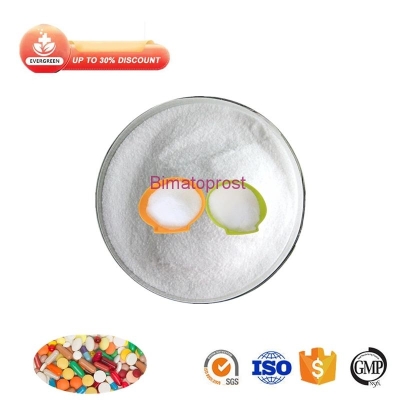-
Categories
-
Pharmaceutical Intermediates
-
Active Pharmaceutical Ingredients
-
Food Additives
- Industrial Coatings
- Agrochemicals
- Dyes and Pigments
- Surfactant
- Flavors and Fragrances
- Chemical Reagents
- Catalyst and Auxiliary
- Natural Products
- Inorganic Chemistry
-
Organic Chemistry
-
Biochemical Engineering
- Analytical Chemistry
- Cosmetic Ingredient
-
Pharmaceutical Intermediates
Promotion
ECHEMI Mall
Wholesale
Weekly Price
Exhibition
News
-
Trade Service
Background: People with type 2 diabetes mellitus (T2 DM) often suffer from cardiovascular complications
.
Oral anticoagulants (OACs), including warfarin and direct oral anticoagulants (DOACs), are widely used to prevent and treat stroke, atrial fibrillation (AF), and venous thromboembolism (VTE).
However, their use may be associated with
a high probability of drug-drug interactions and serious adverse events.
Hypoglycemia is a common complication
of sulfonylurea antidiabetic drugs.
Sulfonylureas lower blood sugar levels
by increasing insulin secretion in the pancreas and blocking ATP-sensitive potassium channels.
Hypoglycemia can be enhanced by several risk factors, including inhibition of drug-drug interactions by inhibiting liver cytochrome P450 (CYP) enzymes, which are responsible for the metabolism
of sulfonylureas such as glimepiride.
Drugs that inhibit CYP450 may increase the concentration of sulfonylureas in circulation, thereby increasing the risk of
hypoglycemia.
Previous preclinical studies have reported possible plasma protein binding and liver metabolism of CY450 interactions
between sulfonylureas such as warfarin and glimepiride.
Two previous studies reported significant correlations between warfarin and sulfonylureas, however, both studies used their own control series design, the main limitation of which was that patients may have different health conditions during exposure and patients were sicker during exposure
.
In addition, Romley et al.
included only patients > 65 years old in their study, so their results may not be generalizable to the entire population, nor did they investigate the association
between the simultaneous use of sulfonylureas such as glimepiride and DOAC.
Objective: Association between simultaneous use of oral anticoagulants and sulfonylureas and hypoglycemia risk in patients with T2DM
.
Study Design and Methods: A retrospective cohort study was conducted between 2001 and 2017 using electronic primary care data from IQVIA Medical Research Data (IMRD), which incorporated data from the Health Improvement Network (THIN), a proprietary database
of Cegedim SA.
Patients with T2DM who received prescriptions for OAC and sulfonylureas were also included
.
We compared the risk
of hypoglycaemia with sulfonylureas and oral anticoagulants using prodigality score matching and Cox regression.
Results: 109,040 patients treated with warfarin and sulfonylureas and 77,296 patients on direct oral anticoagulants (DOACs) and sulfonylureas were included in the study
.
There were 285 hypoglycaemic events in the warfarin plus sulfonylurea group (incidence = 17.
8 per 1000 person-years) and 304 hypoglycaemic events in the sulfonylurea alone group (incidence = 14.
4 per 1000 person-years).
There were 14 hypoglycemic events in the DOACs group using sulfonylureas (incidence rate = 14.
8/1000 person-years), while in the sulfonylurea alone group, 60 hypoglycemic events were observed (incidence = 23.
7/1000 person-years).
Simultaneous use of warfarin and sulfonylureas was associated with an increased risk of hypoglycaemia compared with sulfonylureas alone (hazard ratio 1.
38; 95% confidence interval 1.
10 to 1.
75).
However, we found no evidence of an association between the simultaneous use of DOACs and sulfonylureas and the risk of hypoglycaemia (HR 0.
5495% CI, 0.
27–1.
10).
Table 1 Number, incidence, and gross heart rate
at risk of hypoglycemia.
Table 2 The number, incidence, and heart rate
of events that matched the risk of hypoglycemia in the cohort.
Figure 1 Kaplan-Meier curve for the incidence of hypoglycemia during follow-up [sulfonylureas and warfarin (blue line) versus sulfonylureas alone (red line)].
Figure 2 Kaplan-Meier curve of incidence of hypoglycemia during follow-up (sulfonylureas and DOACs versus sulfonylureas only).
Conclusions: We provide real evidence
of possible drug interactions between warfarin and sulfonylureas.
The decision to use warfarin and sulfonylureas in patients with T2DM should be carefully evaluated
in conjunction with other risk factors for hypoglycemia and the availability of alternative drugs.
Alwafi H, Wong ICK, Naser AY, et al.
Concurrent Use of Oral Anticoagulants and Sulfonylureas in Individuals With Type 2 Diabetes and Risk of Hypoglycemia: A UK Population-BasedCohort Study.
Front Med (Lausanne) 2022; 9







